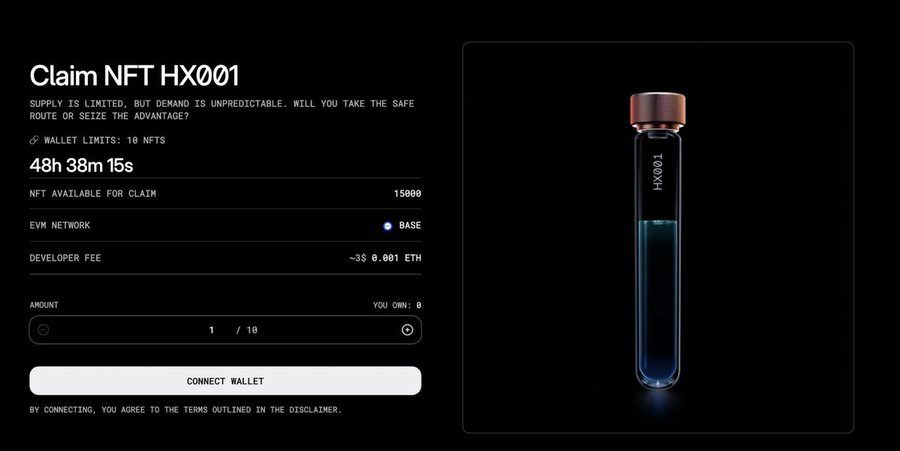The final NFT series of Haust Network is officially launched.
NFT Supply: 15,000
Minting Window: 48 hours
Minting Link: https://nft.haust.network/claim
You may ask: Why are there so many Haust NFTs?
In simple terms, Haust pre-allocates 5% of the total tokens to its Genesis NFTs, but this set of NFTs needs to be "fused" to obtain (similar to card merging in online games).
BioGenesis NFT Evolution Process
Starting Phase: Collect minting essentials
Collection Phase: Collect different BioCultures NFTs
Creation Phase: When the mainnet goes live, participants will "inoculate" all components to create NFTs that will evolve.
Haust also introduces the concept of "time value." The longer you hold, the higher the diversity, and the higher the final Genesis Score, the more generous the token rewards. You can think of it as an upgraded version of liquidity mining—a token distribution mechanism wrapped in art and gamification.
From a fundamental perspective, Haust is built on Polygon CDK, utilizing zkEVM Layer 2, and natively integrates the AggLayer cross-chain protocol, technically capable of supporting large-scale DeFi applications.
More importantly, Haust is not an ordinary ecological project but a core component of Polygon's forward-looking layout. From AggLayer's strategic positioning, Polygon is building a "unified liquidity layer," and Haust, as a native adopter, plays a crucial role in validating the feasibility of this infrastructure.
However, this NFT experiment also carries risks:
The complex fusion mechanism may deter ordinary users.
Token distribution relies too heavily on gamified participation.
From an investment perspective, this is more like a bet on the long-term value of the Haust ecosystem.
DYOR, and manage your risks.

免责声明:本文章仅代表作者个人观点,不代表本平台的立场和观点。本文章仅供信息分享,不构成对任何人的任何投资建议。用户与作者之间的任何争议,与本平台无关。如网页中刊载的文章或图片涉及侵权,请提供相关的权利证明和身份证明发送邮件到support@aicoin.com,本平台相关工作人员将会进行核查。




